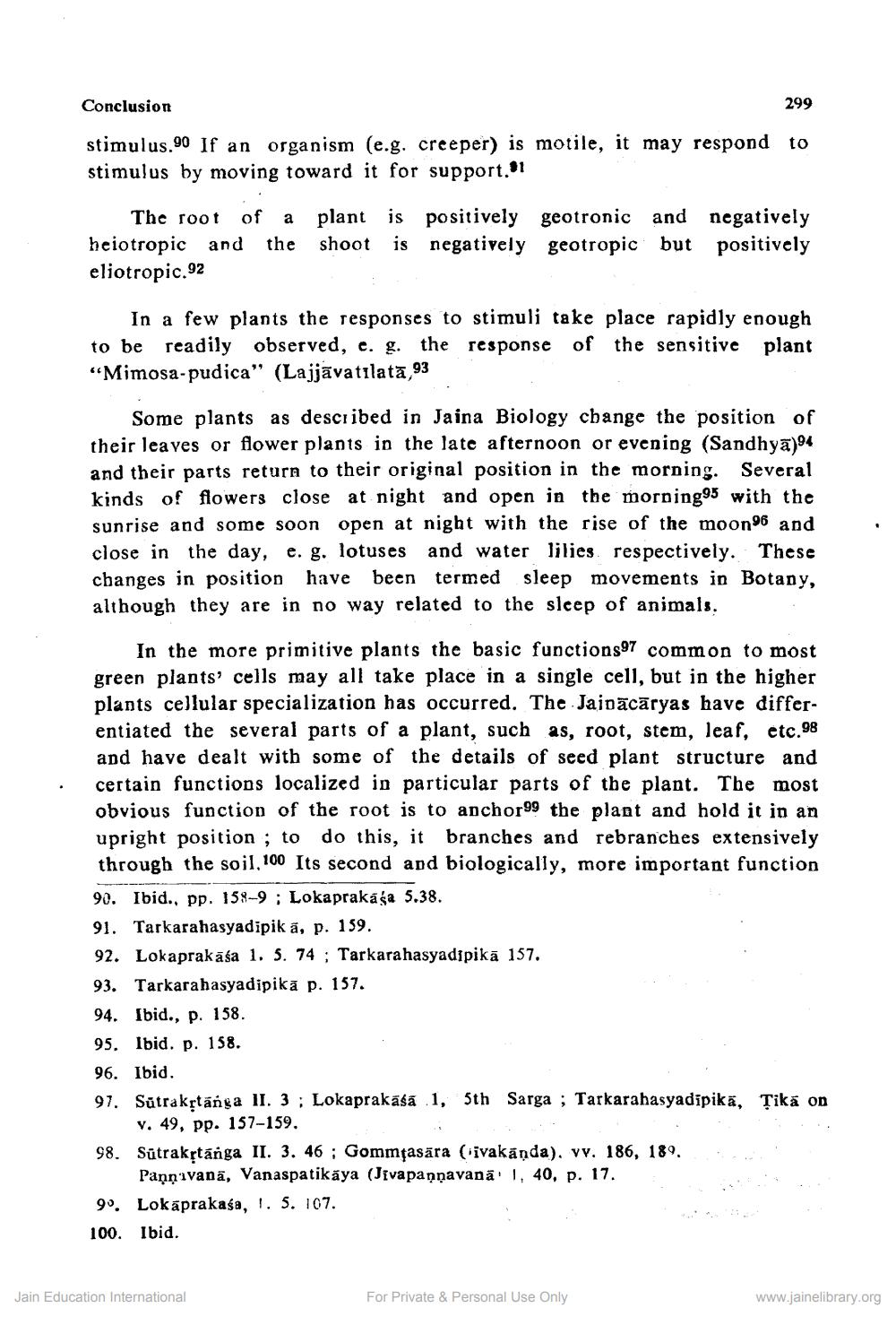________________
Conclusion
299
stimulus.90 If an organism (e.g. creeper) is motile, it may respond to stimulus by moving toward it for support."
The root of a plant is positively geotronic and negatively heiotropic and the shoot is negatively geotropic but positively eliotropic.92
In a few plants the responses to stimuli take place rapidly enough to be readily observed, c. g. the response of the sensitive plant "Mimosa-pudica" (Lajjavatilata,93
Some plants as described in Jaina Biology change the position of their leaves or flower plants in the late afternoon or evening (Sandhya)94 and their parts return to their original position in the morning. Several kinds of flowers close at night and open in the morning95 with the sunrise and some soon open at night with the rise of the moon 96 and close in the day, e. g. lotuses and water lilies. respectively. These changes in position have been termed sleep movements in Botany, although they are in no way related to the slcep of animals.
In the more primitive plants the basic functions97 common to most green plants' cells may all take place in a single cell, but in the higher plants cellular specialization has occurred. The Jaidācāryas have differentiated the several parts of a plant, such as, root, stem, leaf, etc.98 and have dealt with some of the details of seed plant structure and certain functions localized in particular parts of the plant. The most obvious function of the root is to anchor99 the plant and hold it in an upright position ; to do this, it branches and rebranches extensively through the soil, 100 Its second and biologically, more important function 90. Ibid., pp. 158-9 ; Lokaprakasa 5.38. 91. Tarkarahasyadipik ã, p. 159. 92. Lokaprakāśa 1. 5. 74 ; Tarkarahasyadipikā 157. 93. Tarkarahasyadipikā p. 157. 94. Ibid., p. 158. 95. Ibid. p. 158. 96. Ibid. 91. Sūtrakrtánya II. 3: Lokaprakāśā 1, 5th Sarga ; Tarkarahasyadipikā, Tikā on
v. 49, pp. 157-159. 98. Sūtrakştánga II. 3. 46 ; Gommțasāra (iivakāņda), vv. 186, 189.
Pann'ıvanā, Vanaspatikaya (Jivapaņņavadā 1, 40, p. 17. 90. Lokāprakaśa, 1. 5. 107. 100. Ibid.
Jain Education International
For Private & Personal Use Only
www.jainelibrary.org




